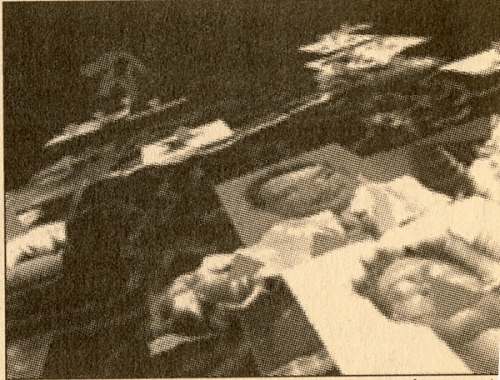Ping
Paul Miller at R1 - also at the Siggraph 95 Interactive communities, data visualisation with a difference
After Web world disappeared off the map many of us thought we would never see its like again. I had only just got hold of a computer powerful enough to see it properly when it mysteriously vanished.
That was then, but this is now:
The PING PROJECT is infinitely better visually and much more user friendly, sometimes I just surf it to get the visual translations of where I've been.
The following is an excerpt from a description by its creators and curators.
contact:
Antya Umstaetter Media Designer ART+COM EN., Budapesterstr.44, 10787 Berlin, Germany phone: fax:+49 30 25417555.
And:Steffen Meschkat ART+COM e.V., Budapesterstr.44, 10787 Berlin, Germany fax:+49 30 25417555
INTERACTIVE NETWORK TELEVISION, VIRTUAL LANDSCAPE, EYE AGENT
INTRODUCTION
Ping: a visual datascape on the Internet. Ping: accessible via the interactive map on the World Wide Web
Ping: a self-generating movie broadcast via various TV-stations

ABSTRACT
Ping is a virtual landscape created interactively by the Users of the Internet. A virtual camera device called 'eye agent' automatically renders a flight through that landscape, which is then broadcast on TV. The potential feedback loop of the TV-watching Internet User creates the notable dynamics and dramaturgy of this self generating movie.
INTENTION
The main idea of the Ping-Project is the visualisation of the Internet and the generation of a real time movie created on a world wide basis by Internet Users. Originally Ping was intended as a visual ride through the Internet in the programme-free time of various TV stations. The Internet as a world wide medium has created an interdisciplinary structure by merging science, entertainment, arts, politics and other disciplines. The goal of Ping is to make this structure visible and to create a cross-cultural communication basis.[...]
STRUCTURE
The three main components of Ping
1. The interactive map sited in the WWW
2. The eye-agent (virtual camera)
3. The datascape
The interactive map
Users can see and change the interactive Ping-map in the WWW in real time by choosing a spot on the map where they want their objects to be placed.
Images, movies, sounds, geometric models and live-sources (e.g. live camera-views e.g. live images of Users in presentation environments ) flow from any part of the networld via the map into the thereby generated datascape.[...]
The virtual camera (eye-agent)
The eye-agent acts like an editor or journalist, who is currently attracted by new images or movies on the datascape, broadcasting these viewed images directly. The choice of images can be made according to personal interests: the characteristic of the eye-agent (e.g. speed and viewing parameters) can be tuned individually for the TV stations or programs (e.g. movements for a techno-video like appearance may be tuned differently as for a scientific research program). By moving around on the datascape, the eye agent is the controlling instance for what is being broadcast on TV.
The datascape
The visual datascape is composed from all Ping-map elements. The 2D objects arriving on the map in the WWW are translated into 3D objects and are then integrated in the datascape. [ ... ]
INFRASTRUCTURE
The Ping mapper runs as an active document under the ART+COM http server, which is accessible from the Internet through a 64kBits-1 link. In order to render the eye agents view into the datascape in real time and broadcast quality, we use a 4 processor SGI Onyx with Reality Engine 2 graphics hardware located at the ART+COM site. We implemented the eye agent based on the SGI Performer programming library. For demonstration purposes, the eye agents datascape renderer may run on any SGI IRIS workstation at respectively lower frame rate and resolution than required for TV broadcast.
Mute Books Orders
For Mute Books distribution contact Anagram Books
contact@anagrambooks.com
For online purchases visit anagrambooks.com






